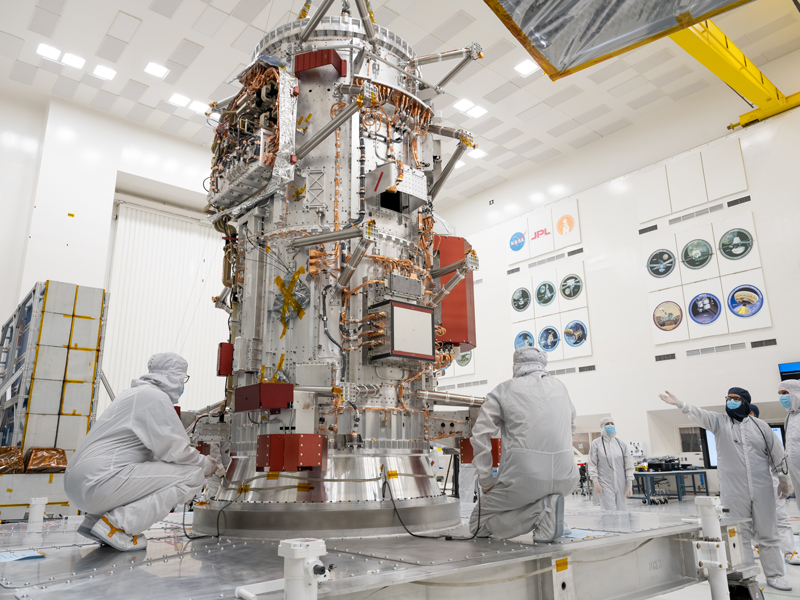All Resources
NASA's Europa Clipper Takes Center Stage

The towering core of NASA’s Europa Clipper spacecraft is shown in the storied Spacecraft Assembly Facility at the agency’s Jet Propulsion Laboratory in Southern California. Standing 10 feet (3 meters) high and 5 feet (1.5 meters) wide, the craft’s main body will be the focus of attention in the facility’s ultra-hygienic High Bay 1 as engineers and technicians assemble the spacecraft for its launch to Jupiter’s moon Europa in October 2024.
Europa Clipper will conduct nearly 50 flybys of Europa, which scientists are confident has an internal ocean containing twice as much water as Earth’s oceans combined. And the moon may currently have conditions suitable for supporting life. The spacecraft’s nine science instruments will gather data on the moon’s atmosphere, surface, and interior – information that scientists will use to gauge the depth and salinity of the ocean, the thickness of the ice crust, and potential plumes that may be venting subsurface water into space.


